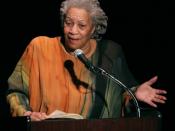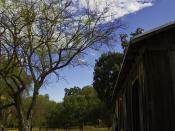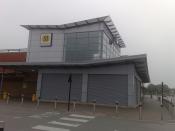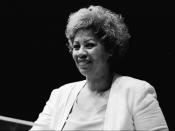Toni Morrison's The Bluest Eye is representative of the period between 1945 and the present because it tackles sensitive race issues.
Blacks in America have had to compare themselves to the majority of white, anglosaxon epitome of beauty--blond hair and blue eyes.
This standard of beauty causes the black race to favor its lighter skinned members simply because they were closer to the ideal white beauty than the rest of the race.
Morrison deals with this subject through the eyes of a child growing up wanting to be beautiful like blond haired, blue eyed dolls that "every girl treasured." Pecola Breedlove wants to be the stereotypical "Shirley Temple" thinking that her life would be better, happier.
Pecola feels that beauty is the answer to all of her problems. The novel deals with how both blacks, and whites, adults and children are affected by these sterotypes, when they are perpetuated by all races.
Beauty seems to be the answer to problems of all color, especially women.
Today, Americans attibute their problems to their weight or their wrinkles think if they fix them then miraculously their problems will be solved.
For years stereotypes have permeated American culture ultimatelsy causing its downfall.
Toni Morrison has a unique style to her writing, winning her Nobel Prize for Literature.
The Bluest Eye is a perfect example of her highly acclaimed works. Morrison uses subtlety in her depiction of the black problem and confrontation with the wirte standard of beauty.
She leaves much of the vision to the reader, which is the key to the work's success. Each reader brings to the novel their own racial beliefs and experiences that validate the stereotypes on which Morrison's characters feed. Morrison's mastery makes the story seem as if it tells itself, communicating what it means to grow up black and female in 20th century America.
Morrison's characters





